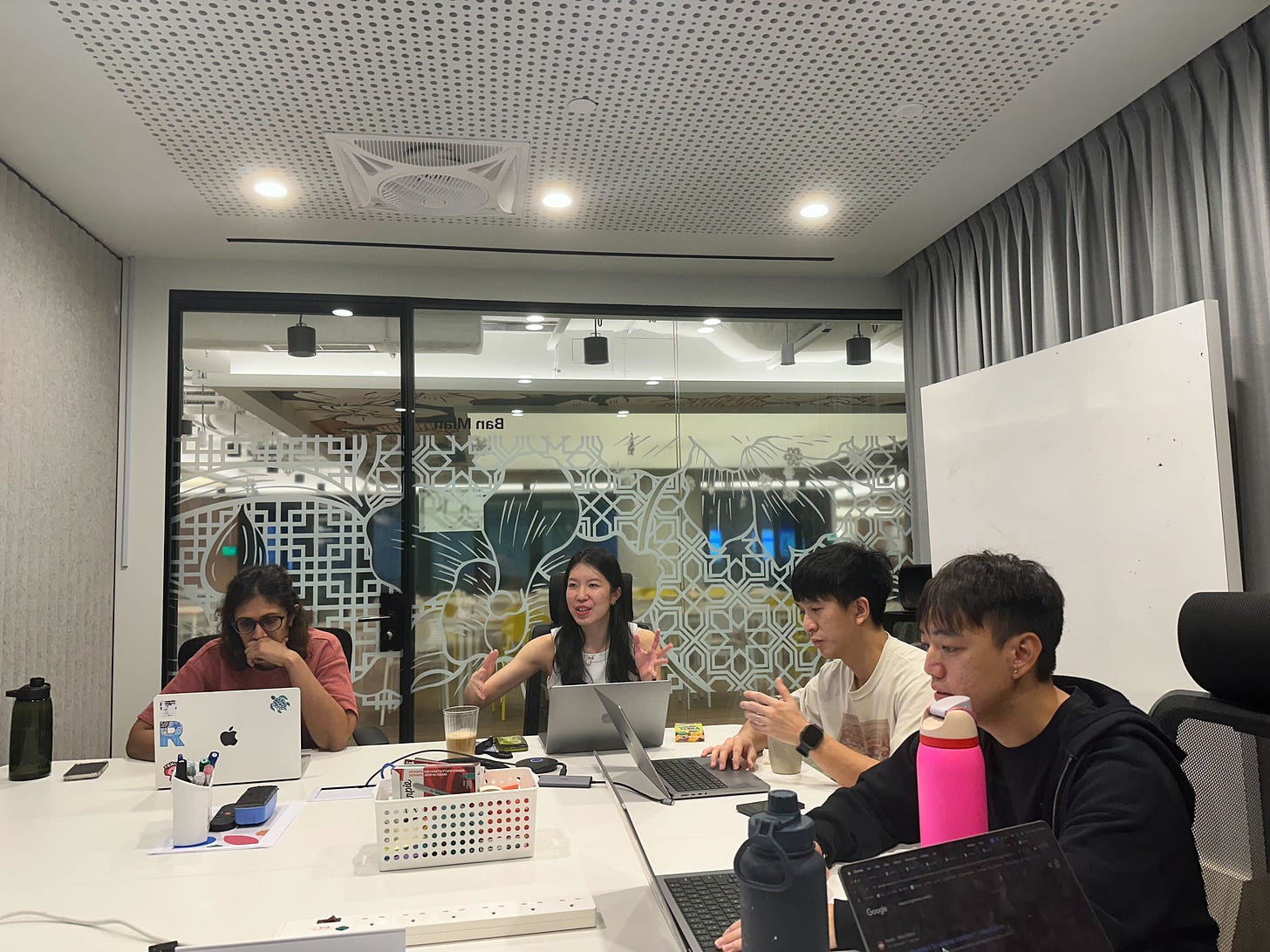Behind the Scenes of the Enhanced ScamShield App: A Designer's Journey
Carina Lim shares her thoughts on the enhanced ScamShield app redesign and how user feedback led to new features that help combat emerging scams.
The ScamShield app, first launched in November 2020, was updated in August 2024 with new features to better protect users from the growing threat of scams. As part of the Singapore government’s efforts to combat evolving scam tactics, the enhanced app introduces AI-powered “Check” and “Report” features, allowing users to identify and block scam calls, messages, and links across multiple platforms, like WhatsApp, Telegram, and SMS. This update aligns with a broader strategy to address the changing landscape of scams, where online platforms and messaging apps have become key targets for fraud.
When I first joined the ScamShield team, one of my primary goals was to address user feedback from the previous version of the app. Many users felt unsure about whether the app was functioning as intended due to a less intuitive interface, and some were frustrated by mandatory data permissions. Feedback like, “Wonder what can you guys do? With and without your app, I still receive plenty of stupid sms and calls” and “For calls, users are not aware if blocking is already done in the background or it's just not working” highlighted these concerns.
Another significant pain point was the reporting process–users found it cumbersome to manually copy and paste messages to submit reports, with one noting, “It’s not easy… switching back and forth between the scam message and ScamShield.”
We knew these were areas that we had to improve upon. Our goal for the enhanced ScamShield app was clear: make it more user-friendly, add valuable features, and ensure greater transparency. With scams evolving rapidly, we also had to expand the app’s capabilities to effectively tackle scams on newer platforms like WhatsApp and Telegram, alongside calls and SMS.
Balancing Needs
As we set out to redesign the app, we relied on data to guide our efforts. A key insight revealed that scams most affected users aged 20 to 39. To ensure the app was user-friendly across all demographics, we conducted multiple rounds of user testing with a diverse range of participants. We focused on creating an intuitive interface that would appeal not only to tech-savvy individuals but also to those less familiar with scam technology.
One of our biggest design challenges was balancing ease of use with the needs of our stakeholders, particularly from authorities. While we wanted to simplify reporting, such as allowing users to only submit a phone number, our collaboration with the authorities revealed that more detailed information was necessary to take action.
For scam calls specifically, we joined forces to identify the minimum evidence users could provide to help authorities feel more confident in determining next steps. To address this, we added prompts for more context, such as asking users to describe what happened during a scam call. This was especially important because if a user didn’t answer the call, authorities often lacked sufficient data to classify it as a scam.
Users also overwhelmingly preferred uploading screenshots of scam messages instead of manually copying and pasting text. To accommodate this, our engineers developed accurate text extraction from images, ensuring all critical data was retained.
Iterating Based on Feedback
Our design process was quite iterative. We started with brainstorming, tested early prototypes, and refined them based on user input. Observing users interact with prototypes during the early stages helped us fine-tune concepts and improve user flows.
One key finding from our usability testing was that the "Check and Report" feature confused some users, especially those new to ScamShield. The mental model of when to "check" and when to "report" was unclear to them. Separating these functions made the flow much more intuitive.
We also conducted guerrilla testing in public spaces, where we approached random individuals to gauge their understanding of the app. This was invaluable in uncovering small but critical issues, such as ensuring the screens were obviously scrollable.
Building Trust and Keeping It Simple
From the beginning, we knew that trust would be crucial in gaining user adoption. Since ScamShield is a government-backed app, it was important for us to communicate that through its design. We borrowed familiar elements like "verified by ScamShield" labels to establish a sense of reliability with users.
At the same time, we prioritised simplicity, ensuring ScamShield was easy to use while powerful enough to address a variety of scams. We avoided over-complicating the app by adding unnecessary features for every emerging scam trend.
Collaboration and Moving Forward
Before the launch, we ran several pilots with public officers and the general public for additional feedback. While the launch went smoothly, we know there’s always room for improvement. For example, we are working on closing the feedback loop so users can see the outcomes of their reports.
The app has gained significant traction so far, with 1.15 million downloads and over 99.8K unique reports submitted. Additionally, 42.9K users have used the “Check” feature, and 48K users have submitted a report at least once.
Looking ahead, I’m excited to continue enhancing the app. One of the most exciting aspects is the potential to communicate with users and educate them about emerging scam trends. We’re also exploring more ways to leverage crowdsourced data to help authorities take action and prevent scams from reaching the public.
The unique challenge of working on a government product is weighing every decision by its potential impact rather than profit margins. While this can be demanding, it’s deeply rewarding to know we’re building something that genuinely helps people and serves the public good.
Download the ScamShield app here or visit scamshield.gov.sg for more information.






